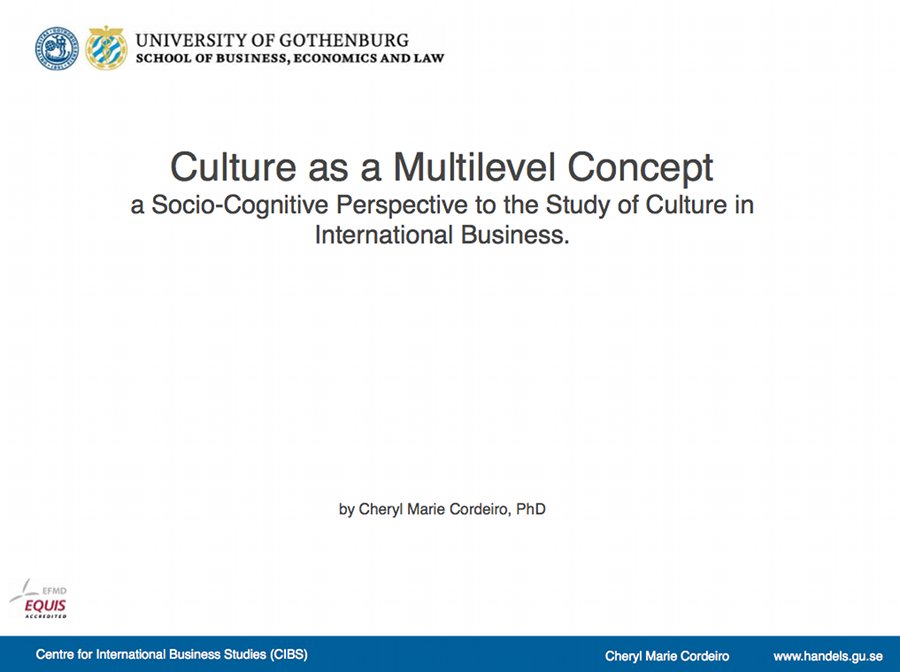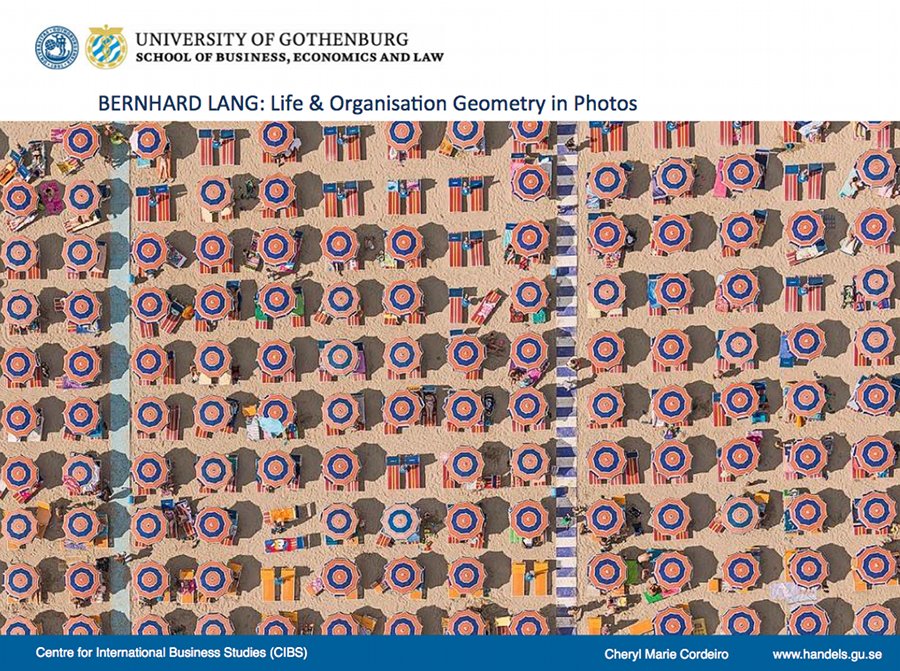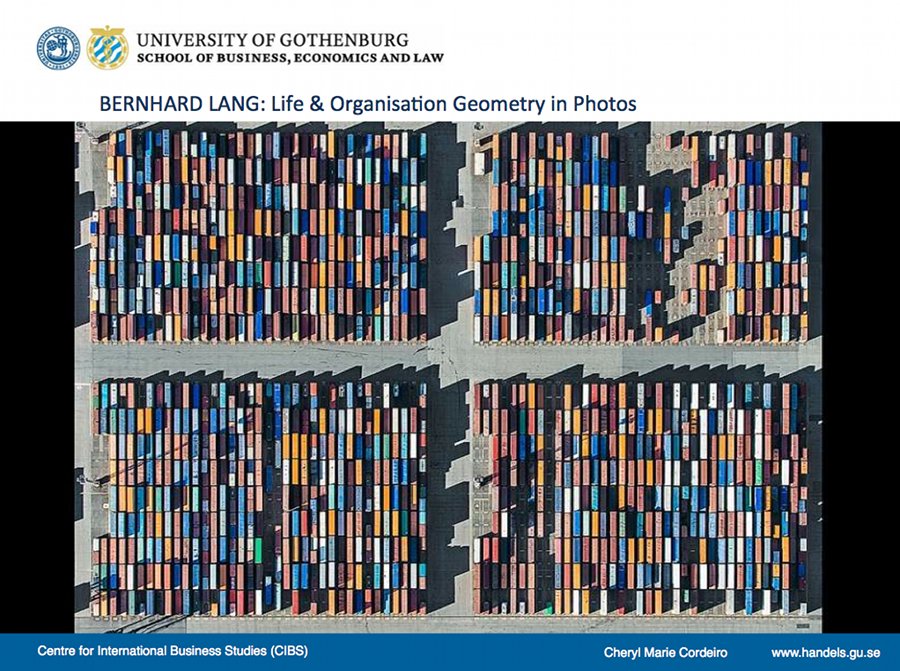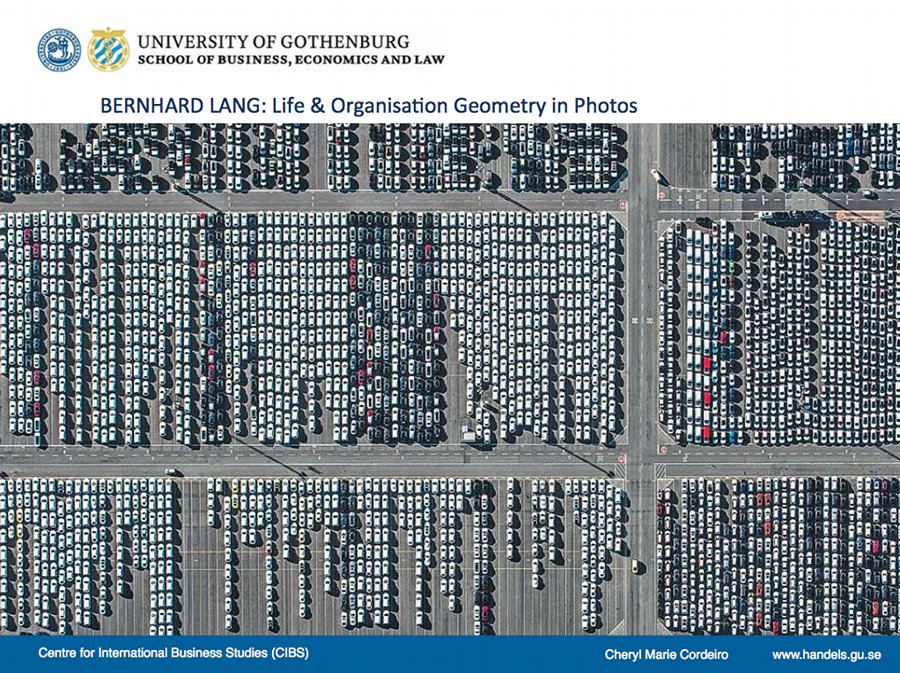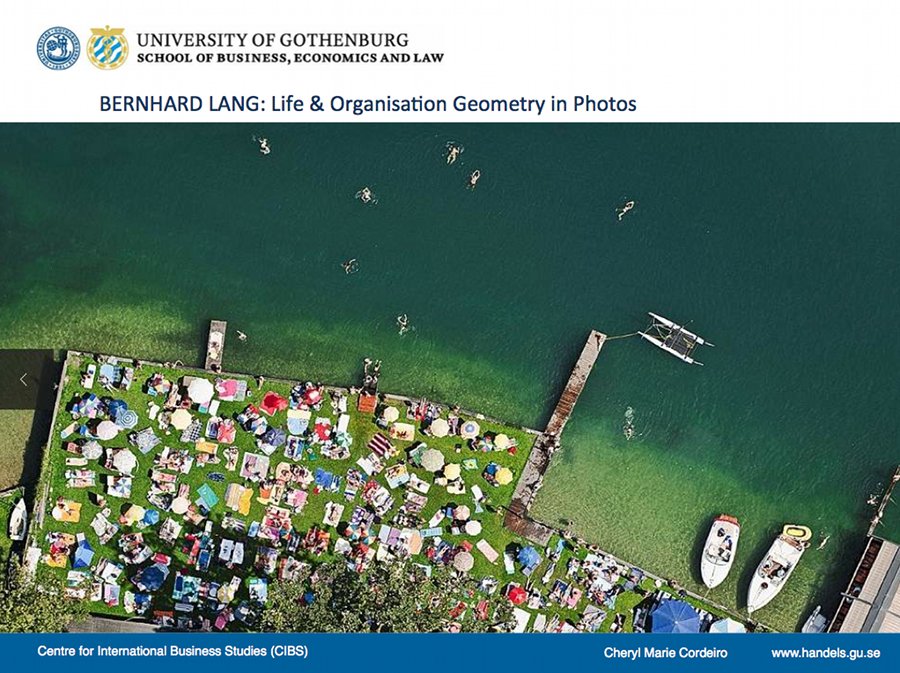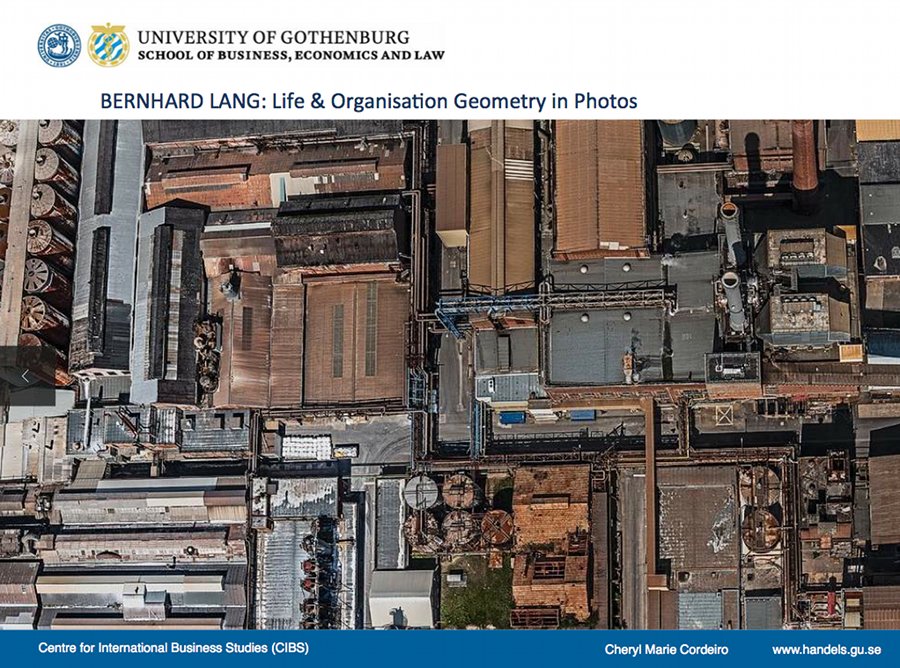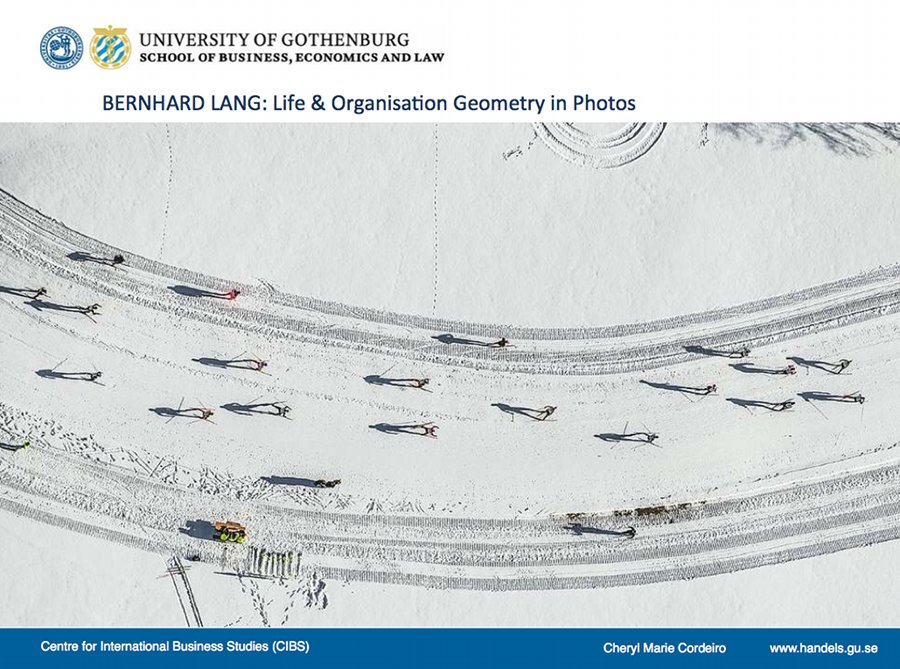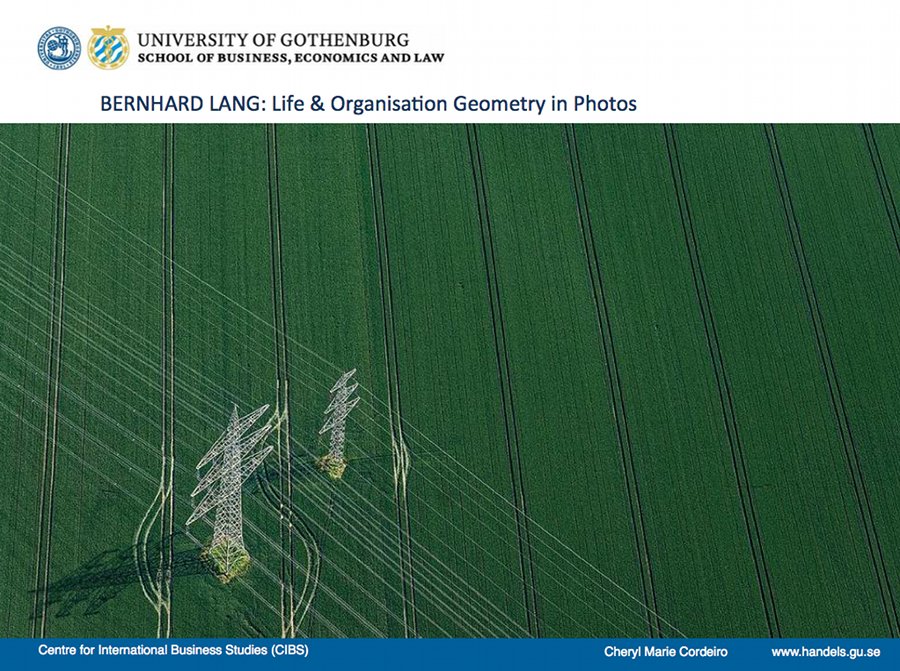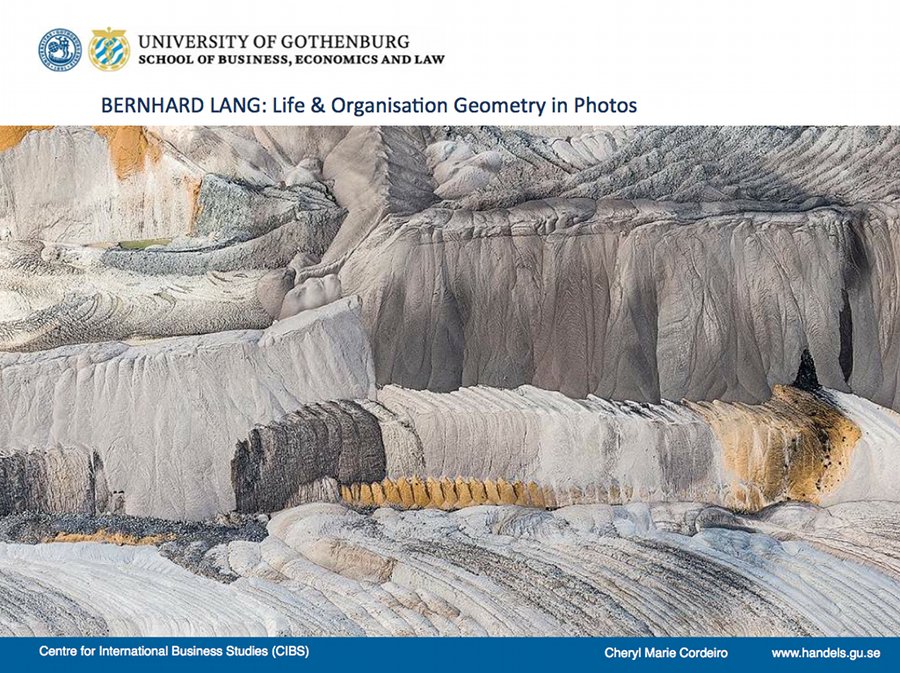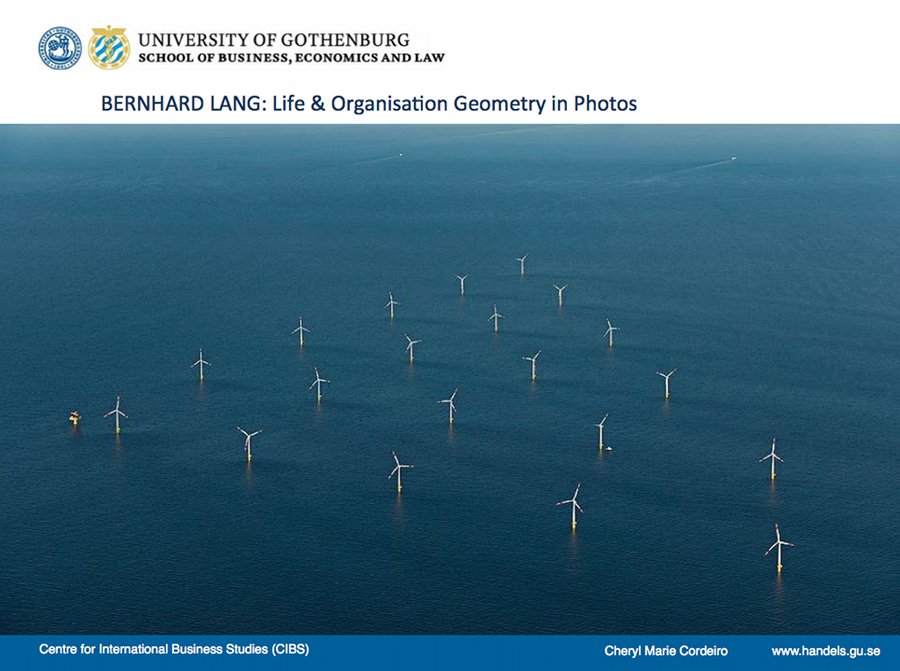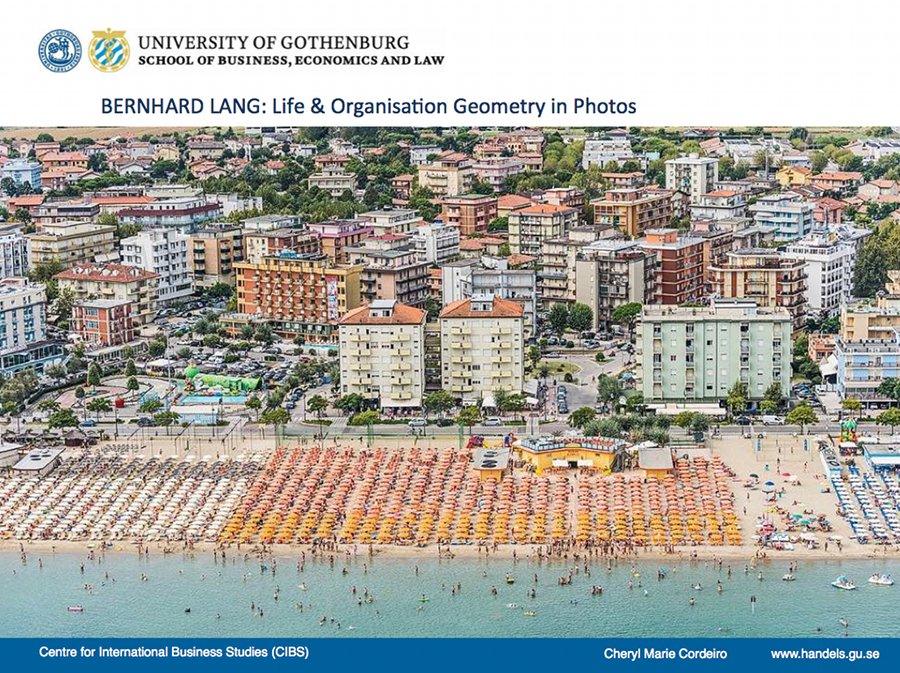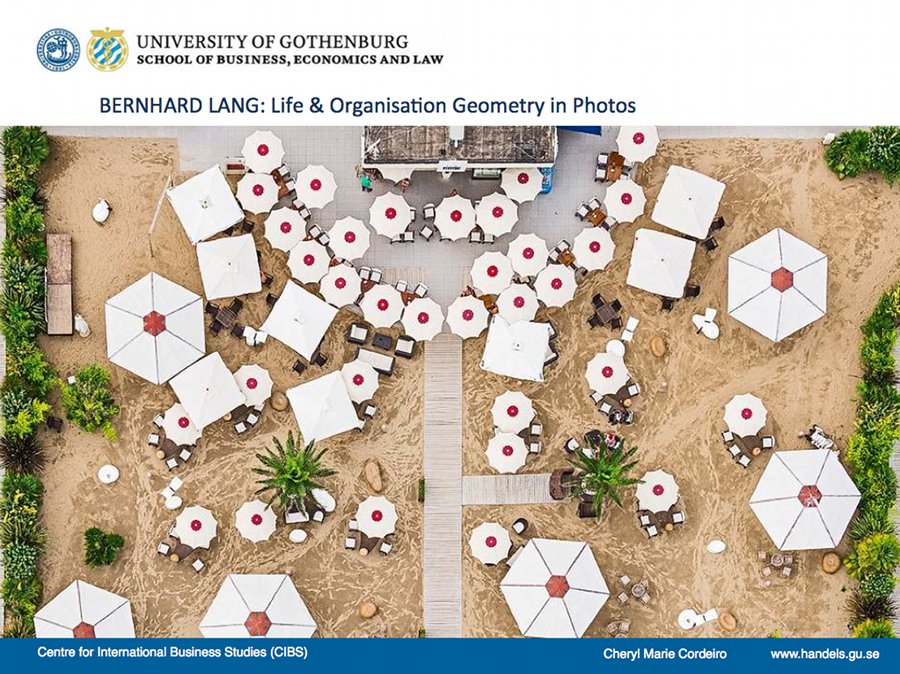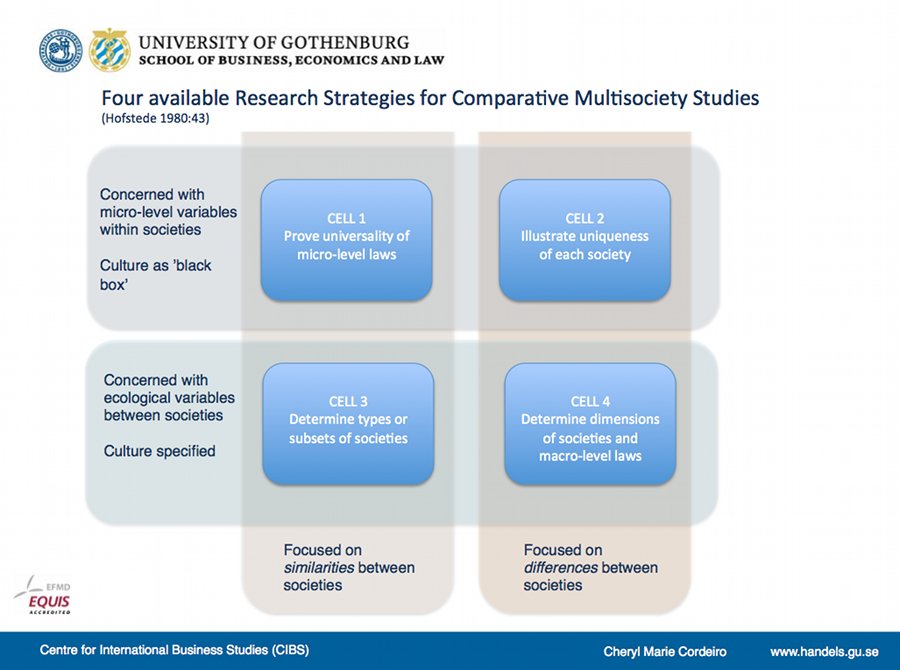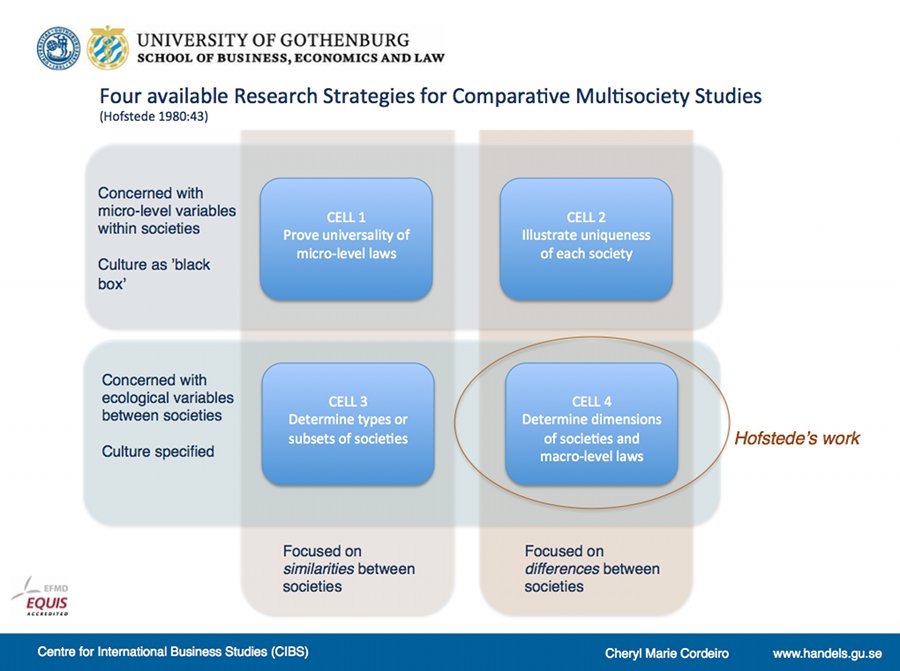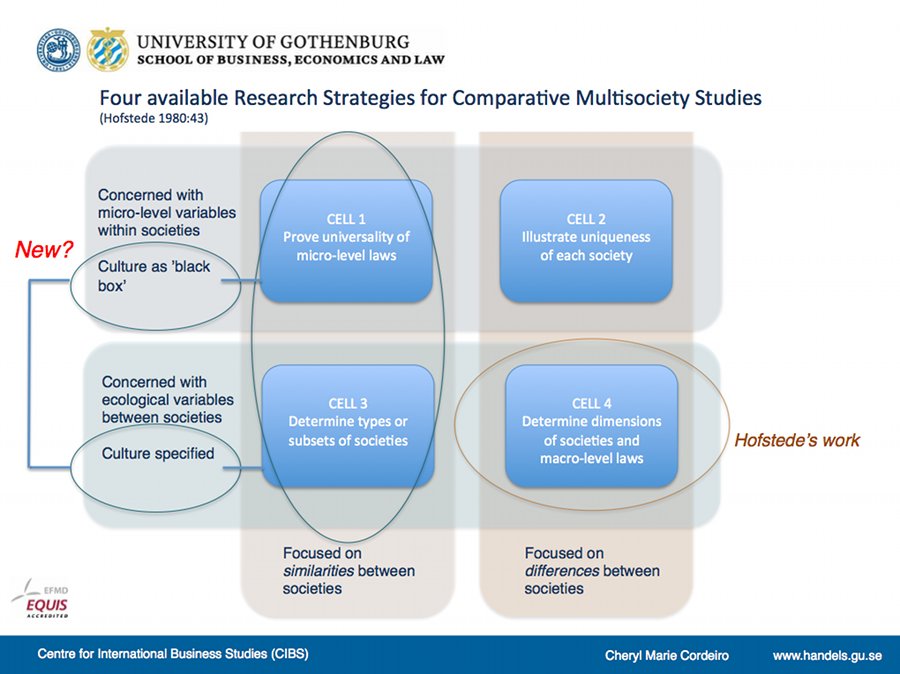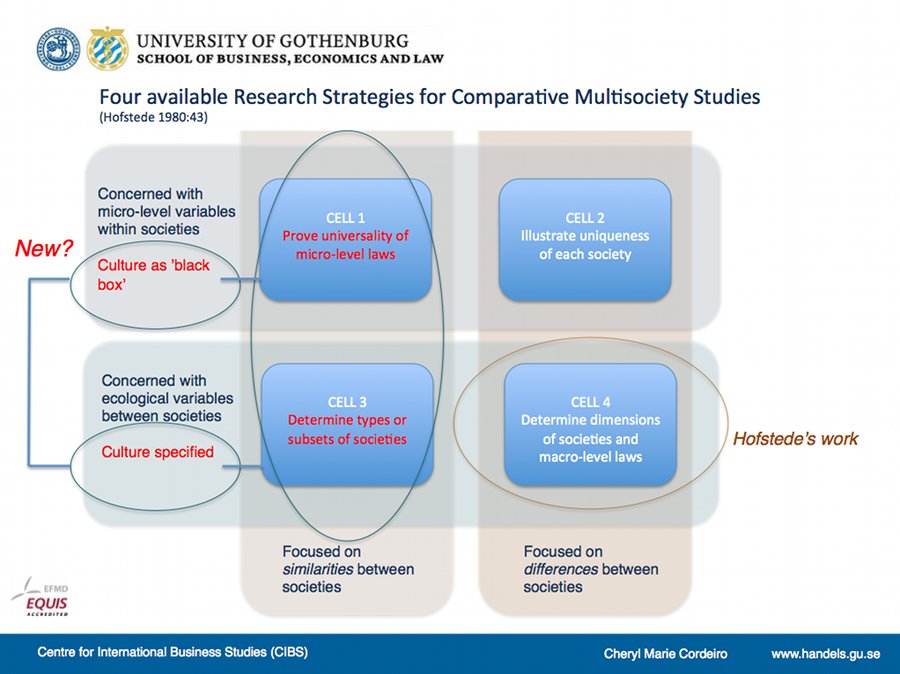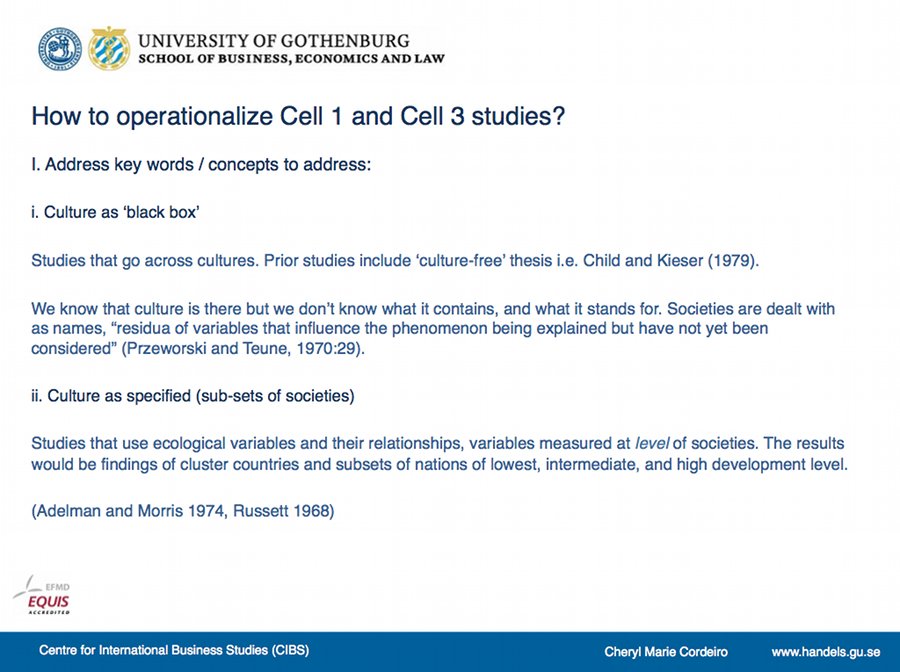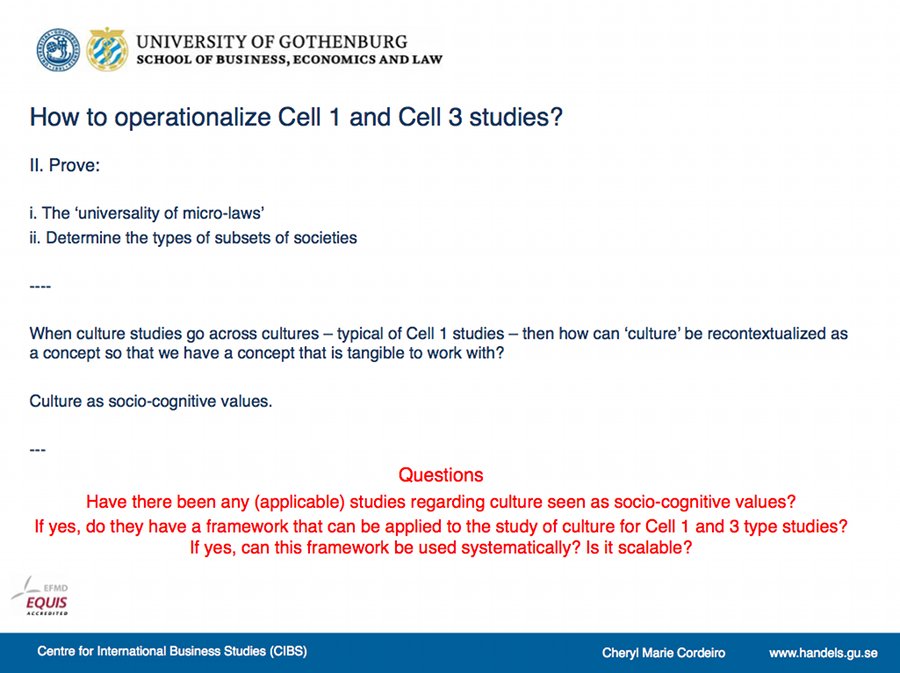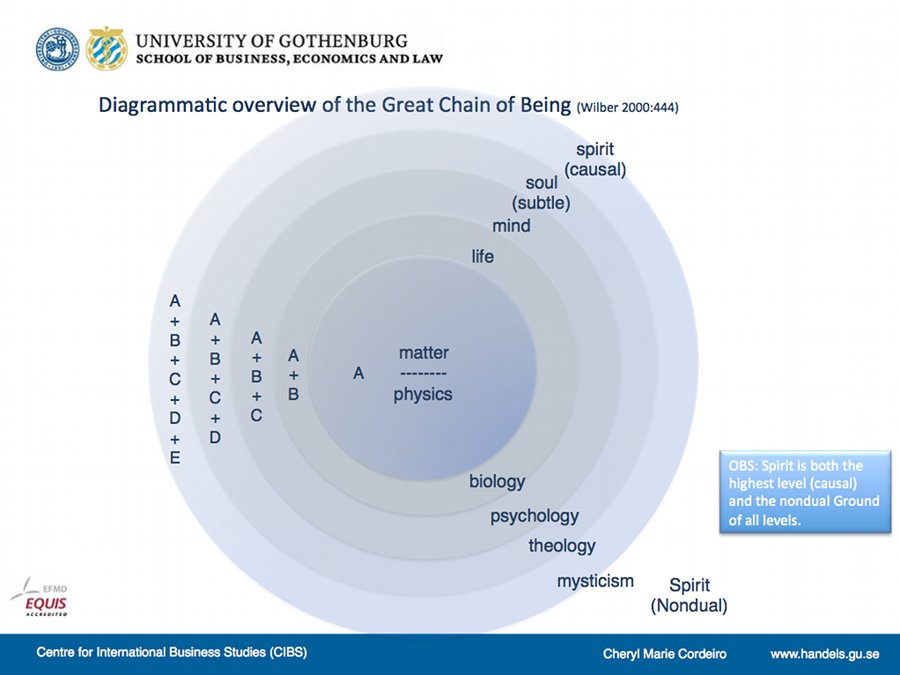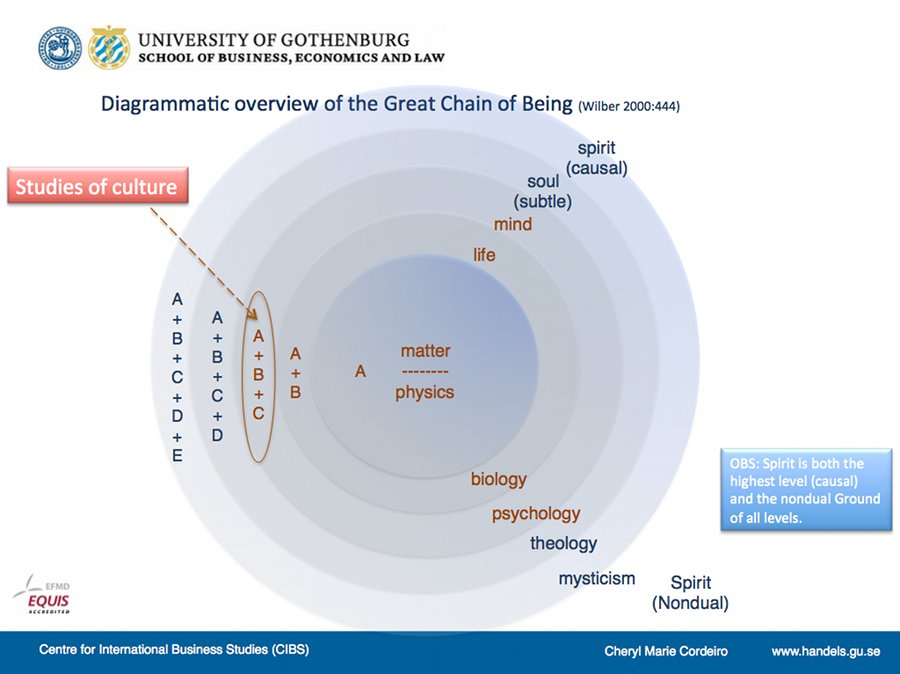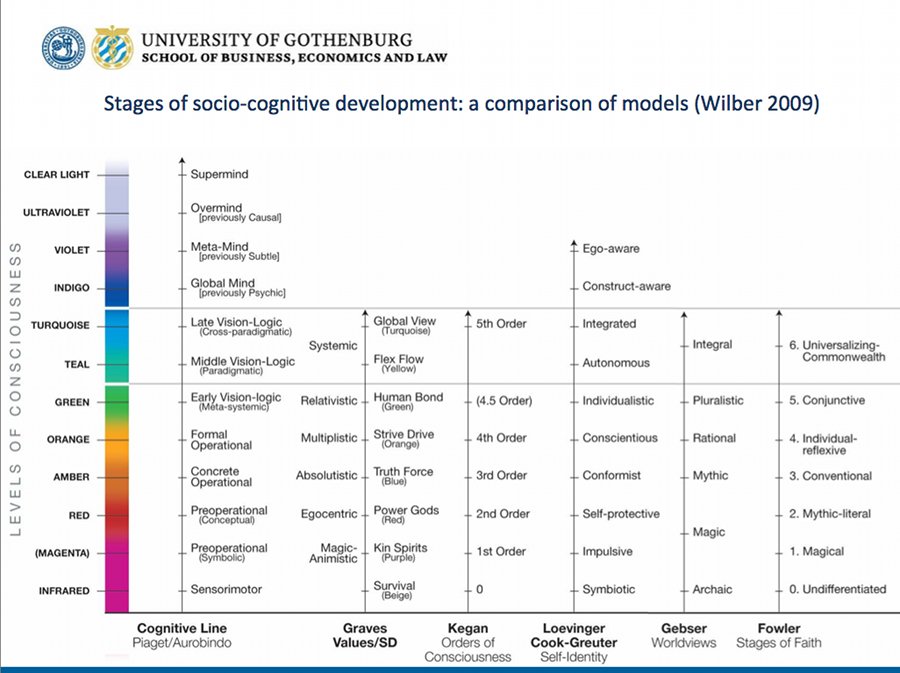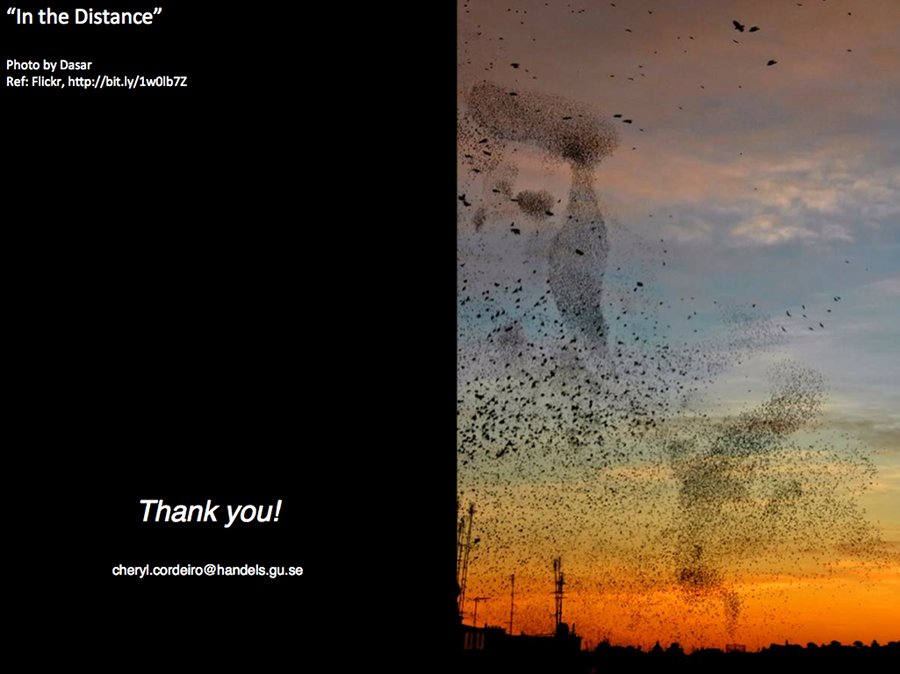The 40th Annual Conference of the European International Business Academy (EIBA). 11-13 Dec. 2014. Uppsala University, Sweden.
Culture as a Multilevel Concept: a Socio-Cognitive Perspective to the Study of Culture in International Business.
I’ll be giving the meta-data to my paper in my presentation today, where I’ll be talking about culture as a multilevel concept, coming from the perspective of socio-cognitive science.
I’ll begin by showing you some pictures from Munich based photographer Bernard Lang. He’s won multiple awards this year and in the past years, for photography in architectural design. His photos were also featured last month on CNN Style with the title, “This aerial photographer captures the eerie geometry of everyday life.”
[SLIDES 3 – 8]
He’s taken aerial images from 490 to 4920 feet in the air. And he had found in his work, a surprisingly large number of “unexpected geometry and patterns of everyday life”, where organization of life, of society was reflected in “unexpected symmetrical, repetitive graphics”, regardless of whether he’s shooting Mediterranean beaches or suburban parking lots, across countries, meaning to also say, across cultures and languages.
[SLIDE 9]
This image is of the Hambach opencast mine, the largest open pit coal mining site in Germany. The point of this image was for Lang to bring awareness to the physical impact of mining. The photo shows how people explore the soil, the earth and its resources.
[SLIDE 10]
It also shows how in order to do this, people who once lived on top of the mine had to be displaced. In 2012, the mine was 1,214 feet deep and over 9 million square feet wide. The footprint of that mine is large.
[SLIDE 11]
Here is another way that we’re making a footprint. This time, in the oceans. What happens to the ocean habitat when this is done?
[SLIDE 12 – 13]
And back to the organization of living, the last picture here showing almost a fractal pattern of organization.
The pictures are exceedingly beautiful. But behind the pictures, there are some observations to be made that makes the story or message behind Lang’s photos relevant to the study of culture in international business.
The two points illustrated from Lang’s discovery from his photography work and explorations is that:
(i) humans tend to organize their life in geometric patterns,
(ii) this is done regardless of place (from coastal areas to snowy mountainous areas), or what we now know as ‘culture’ and language.
The implication of which is that there exists cognitive stratas of patterns that can be identified across ‘bounded’ cultures, reflected in the manner in which we organize our surrounding environment and our living.
The thing to do is how to study this in such a manner that is systematic?
—
Since Hofstede began his major study of culture in the 1980s, there’s been a lot of critique to that body of work, where it is today known mostly as characteristically, Cultural Dimensions construct where culture is studied according to national boundaries. And in fact, within national boundaries the whole idea behind the cultural dimensions construct is that you get an average of national culture values, that really doesn’t get much more specific than that. So while you can operationalize it at a national level and start to classify groups of people according to their national cultures, in an ever interconnected world, where people travel more, and the normal work place is now more multicultural than previous, then scholars have come to realize that the cultural dimensions construct doesn’t really operationalize so well, it doesn’t for example, explain sub-national groups, or groups that share the same traits across national boundaries.
So what has happened in the past decade is that you’ll find multitude of studies of culture in the field of international business, who are exactly trying to address this phenomena of accounting for culture in more dispersed groups, unbounded by nationality for example.
These studies also converge around the idea of culture in complexity, in diversity, in levels, moving away from the strict, dimensional constructs. I think scholars are now seeing culture as more fluid, more dynamic, more organic, which it is. One good example of this is Tony Fang’s work on the yin yang concept of culture, where he sees culture as an ocean or as layers of onion one on top of each other. The idea of this is that culture is a portfolio and that within one national context, there can be very conflicting cultural values exhibited depending on the context of situation.
This brought me back to investigating Research Strategies in the study of culture. What were the available research strategies already out there that scholars were using to study culture in international business?
[SLIDE 14]
And yes, there were four available research strategies you could use to do comparative culture studies, and this was put forth in the beginning of Hofstede’s 1980 work on page 43.
[SLIDE 15]
To which he specifically described his own cultural dimensional approach to culture as falling only within Cell 4 type studies. It is described that dimensions of societies are sorted according to macro-level laws, and specifically the differences in societies are focused upon, to produce national averages in various dimensions. So for all scholars who have criticized Hofstede’s work to be too flat, or too rigid, that would be accurate, and Hofstede had already said so in the beginning of his work in the 1980s.
[SLIDE 16]
The challenge that scholars are now taking up is precisely how to define Cell 1 and Cell 3 type studies. The study of corporate cultures is an example of such type of Cell 1 and Cell 3 studies, where micro-level laws, across national boundaries are determined.
[SLIDE 17]
Still scholastic literature doesn’t quite agree on the definition of culture, made worse when it comes to micro-level laws and subsets of societies. So there are Cell 1 type studies that treat culture as non-existent, studies of ‘culture-free’ thesis such as Child and Kieser’s 1979 work entitled, “Organization and managerial roles in British and West-German companies: an examination of a culture-free thesis”. Where it is hoped that culture, however defined, proves to make no difference or that we know it’s there but we don’t know what it contains.
Cell 3 studies are more promising for going across national boundaries because they are studies that have used ecological variables and their relationships, so Adelman and Morris in 1967 for example, studied the relations of society, politics and economic development. They came up with a 41 variable matrix studying 74 developing nations where were able to classify subsets of nations at lowest, intermediate and high development level. Another study by Russet in 1968 used data from the World Handbook of Political and Social Indicators, to delineate regions, arriving at clusters of countries.
[SLIDE 18]
So there have been studies of this type, and in an increasingly interconnected, globalized world, we’ve come to realize that it is more Cell 1 and Cell 3 type understanding of culture is needed, still, common to these Cell 1 and Cell 3 type studies, especially Cell 1, is the difficulty of operationalizing the concepts.
How do you
– prove the universality of micro-level laws? And,
– determine the subsets of societies?
[SLIDE 19]
So to explain the meta-data to the paper I wrote, what I did was to go back to the key words or key issues to be addressed when looking into a new research strategy for culture in international business, one that can explain culture as dispersion and cohesion, much like how project groups come together for one purpose, for a certain period of time, and then disperse, then re-group in another form. How can you explain culture in such working dynamics in a systemic and systematic manner?
[SLIDE 20]
Specifically, when culture goes across cultures – and here you already see the disjunct in the use of words – “when culture goes across culture” – it sounds like a tautologous argument already. Meaning to say, what needs to be done is to recontextualized ‘culture’ as a concept that can be tangible to work with. And if you think about it, where in the broadest sense, culture is defined as something cognitive (that has behavioural consequences), a ‘programming of the mind’ so to speak, then culture would be the values, spoken or unspoken.
And the questions I asked in order to write the paper were:
i. Have there been any (applicable) studies regarding culture seen as socio-cognitive values?
ii. If yes, do they have a framework that can be applied to the study of culture for Cell 1 and 3 type
studies?
iii. If yes, can this framework be used systematically? And,
iv. Is it scalable?
[SLIDE 21]
In search for an answer to the first question, here’s a diagrammatic overview of the Great Chain of Being. You’ll find this in Ken Wilber’s work from 2000, where you could say he addresses the encompassing characteristics of the study of things, with each outer field, encompassing the previous.
[SLIDE 22]
When studying culture, you’ll find that it corresponds to the following fields of A + B + C, where psychology is found in the same space the study of mind or cognition.
Turning to the field of psychology and cognitive studies then, in search of the answer to the first question, you’ll find a portfolio of studies on the stages of socio-cognitive development including Piaget, Aurobindo, Graves, Spiral Dynamics, Kegan, Gebser etc.
Maslow is not here mentioned, where Maslow would be the study most people outside the field of cognitive studies are familiar with. Maslow is also highly revisited in his original theory of human motivation and human needs till today. In fact, Hofstede himself referred to and critiqued Maslow, when writing about his study about culture in cultural dimensions.
But Maslow is not here referred to, which to me is interesting because personally, I’ve found the work of Clare Graves much more insightful than Maslow’s own work. Graves was contemporary to Maslow, except not published as much, and they had both set out to study the same thing, but each coming up with slightly different perspectives.
While Maslow’s theory is often seen depicted as a pyramid of needs, mostly understood that you satisfy one level before moving on to the next level. And it’s also true that Maslow did specify individuals can have differing strengths of needs satisfaction and they can therefore straddle levels of needs, Graves’ study is often represented in a double-helix diagram, where from the beginning, he saw human cognitive development, and human social development as an open cyclic emerging phenomenon, where people development from one stage to another and in times of problems or when faced with a challenge, individuals and groups of individuals can often regress in behaviour, before evolving to the next level of understanding, problem solving or consciousness.
[SLIDE 23]
So what these studies in cognition and human psychology offer is a perspective of groupings of individuals based on their cognitive maturity and the maturity of their consciousness. Meaning to say, individuals are grouped according to what values they hold, by how they understand their environment and then how they go about managing their environment, including how they problem solve.
[SLIDE 24]
The idea being that in each of these lateral bandings of cognitive maturity, you’ll people, across national cultures, speaking different languages, from different ethnicities but sharing similar cognitive models and therefore exhibiting similar behaviour.
These psychology and cognitive models allow for a systematic grouping of people and it offers a systemic framework against which culture studies of Cells 1 and 3 can take place. The most comprehensive of these frameworks, the most fluidly conceptualized would be that by Clare Graves which from his research studies, shows that his findings can be applicable at various levels too, from individual, to family, to organizations, society, national level and regional levels.
[SLIDE 25]
I’ll leave you here with a photo taken by Flickr user Dasar, entitled “In the Distance” showing the movements of a flock of birds that I think is more relevant to how culture should be conceptualized and studied today. The boundaries are fuzzy, there are thicker groupings of birds in some areas, and there’s also fluidity in movement. Birds come together, move, disperse, come together again. In fact, a study of bird flocking behaviour also shows that these groupings have a hierarchy within them, where it is the strongest male who starts to lead the flock in a different direction. Smaller, weaker males and females are pushed to the outer rims of the flock, so there’s a constant play of roles here too that is not immediately detected except through careful study.
In the field of anthropology and biology, there’s been talk of how the human species, are now beginning to show signs of behaving as a ‘superorganism’. This aspect is also illustrated by Lang’s photography work, of the impact of how we organize our lives and what impact of footprint we make in the process of organizing our lives.
And this is due to the increasing understanding of how everything on earth, on the globe is interconnected, from the weather to the sea, to its creatures, humans being one species of animals on earth. It is the increasing awareness of the environment and sustainability of resources, that is causing us to see things in new light. And if humans are beginning to behave as a superorganism, then it will be increasingly relevant to view culture as patterns such as these flock of birds create when in movement. Because groups of people are ultimately individuals, individuals who are now more mobile, more autonomous yet more interconnected.
And it becomes more important for culture in IB to study Culture in a manner that can be framed in this context.
